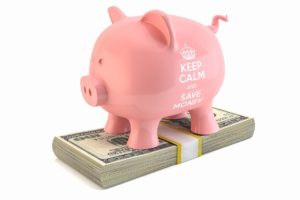The Basics of Donor Advised Funds
How to Encourage Donors to Give to Your Nonprofit Through a DAF
As a nonprofit, you’ve probably heard about donor advised funds, and you may even know a little bit about them. But are you actively pursuing donors who have a DAF and want to use it to give to qualified charities like yours?
Advancing Philanthropy’s April 2020 issue featured a pair of articles by Josephine Wolfe Everly and Ted Hart that explained the basics of donor advised funds and how to use them to grow your nonprofit’s fundraising. Everly is the Chief Development Officer for the Leadership Roundtable, and Hunt is President and CEO of CAF America International.
No matter how big or small your nonprofit, as long as you are a qualified tax-exempt organization, your donors can give using a donor advised fund.
What Is a Donor Advised Fund?

Image by Gino Crescoli from Pixabay
A donor advised fund is, as Everly puts it, like a “charitable checking account.” The most important distinction is that once money is deposited into the DAF, it can only be given out to nonprofits. The donor can never take the money back out for themselves.
Donor advised funds can be held by individuals, families, businesses, or groups such as giving circles, and you can donate cash, stock, business assets, and even non-liquid assets such as art or property.
Currently, the minimum deposit to start a donor advised fund is just $5000, far less than the $5 million required to set up a private foundation. DAFs are therefore much more accessible to typical middle and upper-income donors, not just the ultra-wealthy.
Advantages of a DAF for Donors
The main benefit for donors of using a DAF is that you get the charitable tax deduction in the year you deposit money in the fund, not when it gets paid out to a nonprofit. With the 2017 tax bill raising the standard deduction, DAFs are a way to still get a big tax deduction, because you can give two or three years’ worth of donations all in one year and claim the deduction that year, and then spend the next few years giving the money away.
Plus, in certain DAF accounts such as those held by account sponsors that offer investment options, like Fidelity and Schwab, your DAF can accrue interest, just like a Health Savings Account or a college 529 plan.
So a DAF gives a donor more flexibility in when and how much to give, while still retaining the tax benefits of donating.
How Does a Donor Use a DAF?
A donor can contribute to a donor advised fund at any point in time, and then decide later when and where to distribute the money. This gives them more flexibility – a major selling point for donors who want to sustain their giving over a long period of time.

Image by Arek Socha from Pixabay
To give through a DAF, a donor must take three steps:
- Give money to the donor advised fund and claim their tax deduction for that year
- Tell the DAF account sponsor (like Fidelity or the National Philanthropic Trust) where they want to give money, and how much. The sponsor then does their due diligence, to confirm that the designated organization qualifies
- The money is donated by the account sponsor or the donor
The most important caveat to this is that donations from a DAF cannot be given in exchange for services or products, such as gala tickets, merchandise, or auction items.
Also, because the donor has already claimed their tax deduction in the year they gave to the fund, they cannot claim an additional tax deduction when they give through the fund to a nonprofit.
This affects how your nonprofit responds and thanks them.
You cannot send a tax-deductible receipt for a gift given through a DAF. And when you send a thank-you note, don’t thank the donor for “their tax-deductible gift,” which is common language in thank you letters.
Instead, as Hart recommends, make it clear in all your post-gift communication that this is a gift from the name of the donor advised fund. For example, you could say, “thank you for your gift via the DeShawn and Keisha Jackson Donor Advised Fund.” This way, an accountant who sees that letter will clearly understand there is no tax benefit for this gift because that benefit has already been awarded previously.
Why Nonprofits Should Pursue DAF Donors
As the article reports, in 2014, Oxfam started pursuing DAF donors by including appeals to them in their fundraising. 1% of their donors gave using a donor advised fund. Four years later, that was up to 2.3%.
At first, that seems insignificant. But, these are not ordinary donors. They are mid-level and major donors. Though just 2.3% of donors to Oxfam used a DAF, those gifts accounted for 14% of their overall giving the year.
Here’s some more data showing why your nonprofit should be pursuing donor advised funds:
12.7% of all individual giving in the U.S. came from donor advised funds in 2019. And it’s growing. Fidelity’s 123,000 DAF accounts gave an average of $4092 in 2019 and supported an average of 10.4 nonprofits. The average DAF account is worth $167,000.
So, DAF donors are generous and prolific. They like to spread their gifts around, and you have a great chance at being one of the organizations that benefit.
The same report found that 92% of DAF donors included the donor’s name and address. So unlike a Facebook Fundraiser, which has much smaller value donors usually, you can follow up with most of your DAF donors. Giving from Fidelity’s donor advised funds has remained consistent year after year, and 60% of the gifts were designated for “where needed most,” the best kind of gift for a nonprofit.
Another report found that donor advised funds pay out 21% of their value, whereas private foundations pay just 7%, barely over the 5% required minimum. And DAFs gave $23.42 billion in 2019, nearly half of the $54 billion given by foundations, even though foundations have about nine times as much money.
Donor advised funds are giving away huge sums of money, so if your nonprofit isn’t making it easy to give using this channel, you are missing out.
How to Attract More Gifts from Donor Advised Funds

Image by Gerd Altmann from Pixabay
There are two aspects to getting more donations from donor advised funds.
First, you need the right language and legal information to be easily available. And second, you need to ASK for them!
Here are a few tips in attracting more DAF donors:
- Make it clear in all your fundraising communications that you accept gifts from DAFs
- Include all legal information, especially on your donation page. This includes your legal organization name, address, federal tax ID number
- Create a special donation page exclusively for accepting gifts from DAFs
- Register with DAF Direct and install their widget on your site, which enables donors to give directly to your nonprofit from Fidelity, Schwab and BNY Mellon DAF accounts
- Make direct appeals for DAF gifts, and ask donors who have one where it is hosted (such as Fidelity), so you can deal with them as needed
- For donors who have already given through a DAF, reach out personally and ask if they want to give again from it. Remember how much money is held in these – nearly $200,000 in the average account
- Ask donors to designate your nonprofit as a beneficiary in their donor advised fund, ensuring you are part of their legacy of giving
- Network with local community foundations that work to connect donors to organizations that match the impact they want to have
The key principle behind all these is – Make It Easy.
Donors who use donor advised funds have done the legwork to make it clear they want to give. What you need to do is make it easier for them to use their preferred giving option.
Want more content? Get weekly nonprofit fundraising and copywriting tips, strategies, and motivations in the ProActive Insights newsletter.

